This area deals with the fundamental laws and building blocks of nature and how they interact, the properties and the behavior of matter, and research into space and time and their structures.
innovations-report provides in-depth reports and articles on subjects such as astrophysics, laser technologies, nuclear, quantum, particle and solid-state physics, nanotechnologies, planetary research and findings (Mars, Venus) and developments related to the Hubble Telescope.
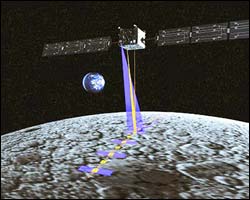
This is clearly Europe´s time for interplanetary exploration. Having sent the first European mission to Mars, ESA is about to launch its first probe to the Moon. It is called SMART-1 and its goals are both technological and scientific. It is the first of a series of “Small Missions for Advanced Research in Technology”.
On the one hand, SMART-1 will test new state-of-the art instruments and techniques essential to ambitious future interplanetary missions, such as a solar-electric prim
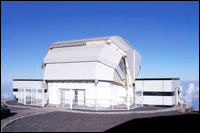
The Liverpool Telescope, the world’s largest fully robotic telescope, has snapped its first images of the heavens this week. This 2 meter optical telescope is owned by the Astrophysics Research Institute (ARI) of Liverpool John Moores University (JMU), but observes autonomously from its site on La Palma in the Canary Islands. The telescope was designed, constructed and commissioned by Telescope Technologies Ltd., a subsidiary company of JMU.
The Liverpool Telescope’s unique capabilities of

Using a powerful electron microscope to view atomic-level details, Johns Hopkins researchers have discovered a “twinning” phenomenon in a nanocrystalline form of aluminum that was plastically deformed during lab experiments. The finding will help scientists better predict the mechanical behavior and reliability of new types of specially fabricated metals. The research results, an important advance in the understanding of metallic nanomaterials, were published in a recent issue of the journal Scien
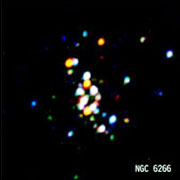
NASA’s Chandra X-ray Observatory has confirmed that close encounters between stars form X-ray emitting, double-star systems in dense globular star clusters — spherical collections of hundreds of thousands of stars. These double-star systems have a different birth process than their cousins outside globular clusters, and should have a profound influence on the cluster’s evolution. The Marshall Center manages the Chandra program.
A team of scientists led by David Pooley of the Massachus
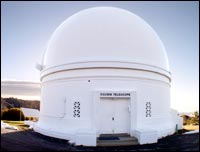
The world’s largest astronomical camera has been installed on Palomar Observatory’s 48-inch Oschin Telescope in California. This telescope has been working to improve our understanding of the universe for nearly 55 years. The new upgrade will help it to push the limits of the unknown for years to come.
The new camera is known as QUEST (Quasar Equatorial Survey Team). Designed and built by astrophysicists at Indiana and Yale universities, QUEST recently “saw” its first starlight and i
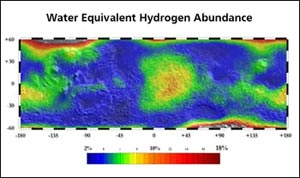
“Breathtaking” new maps of likely sites of water on Mars showcase their association with geologic features such as Vallis Marineris, the largest canyon in the solar system.
The maps detail the distribution of water-equivalent hydrogen as revealed by Los Alamos National Laboratory-developed instruments aboard NASA’s Mars Odyssey spacecraft. In an upcoming talk at the Sixth International Conference on Mars at the California Institute of Technology, in Pasadena, Los Alamos space scienti